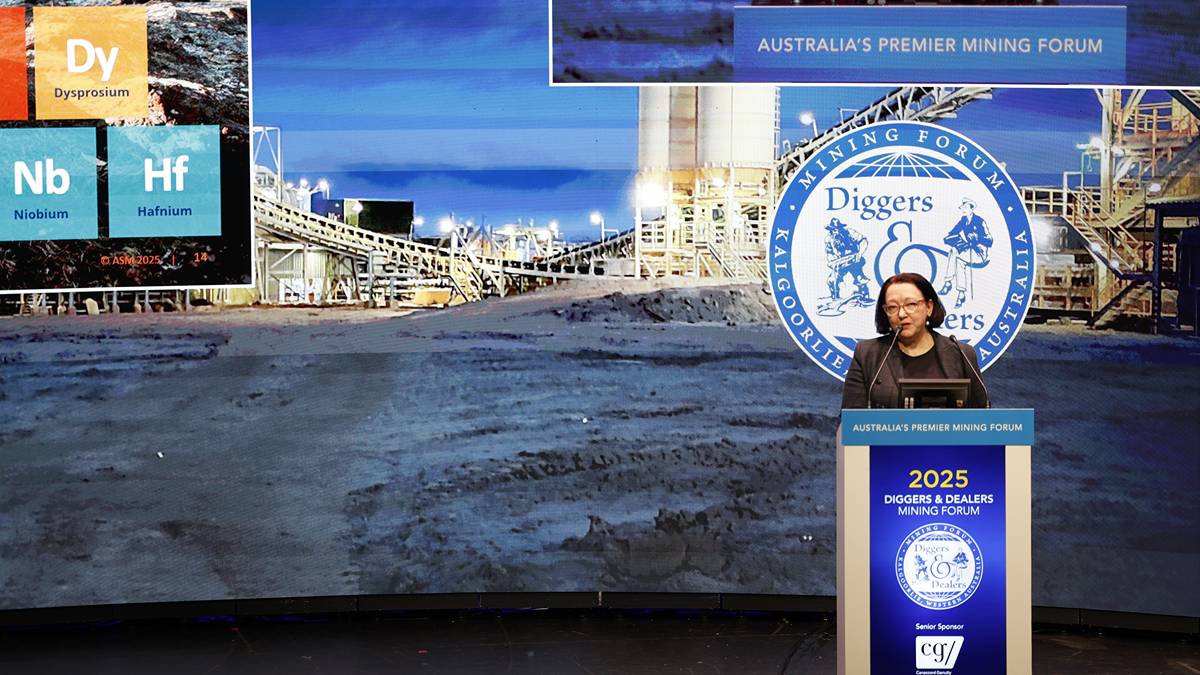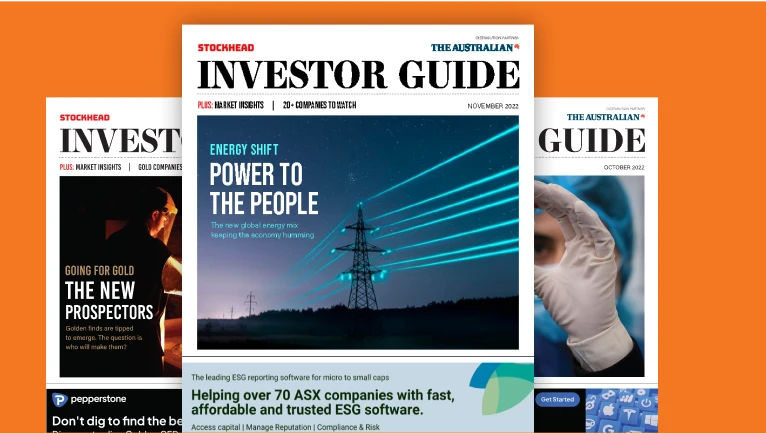Rare earths are finally a household name

Rare earths miners and explorers are dealing with a sudden rise to fame, as governments throw cash at the critical minerals. Pic: Getty Images
- Interest in the rare earths space has never been stronger
- The space has made mainstream headlines this year
- Australian players are leveraging off a strong push by the US and other governments
Interest in the rare earths space has never been stronger, as the West ramps up its efforts to secure supply.
Rowena Smith, managing director of Australian Strategic Materials, which is developing the Dubbo rare earths project in New South Wales, said the vulnerability of the rare earths supply chain had been known for a long time.
“The awareness has been there, but what we didn’t see was action,” she told reporters on the sidelines of Diggers and Dealers in Kalgoorlie last week.
“We saw a lot of talk, a lot of awareness, of people feeling they still had time before they needed to actually do anything, and what has happened with Liberation Day and then China’s response of putting restrictions on rare earths is that it’s moved that from talk to action – and action with urgency.
“We’re seeing that with government. We’re seeing it with the magnet producers. We’re seeing that with the end markets.
“And the end markets are the car manufacturers, the robotics manufacturers, the defence industries, and they are realising that they are unacceptably vulnerable to supply chain disruption, and they need to have some redundancy in their supply chain, so it’s really sped up the discussions.”

Hitting the mainstream
Rare earths burst into the mainstream media at the start of the year when US President Donald Trump announced plans to purchase Greenland, partially to access its mineral endowment.
Trump also signed an executive order which pledged to make the US “the leading producer and processor of non-fuel minerals, including rare earth minerals”, which sparked retaliatory export controls by China.
In late April, the US signed a deal with Ukraine that would give the US access to Ukraine’s mineral resources in exchange for establishing an investment fund to rebuild Ukraine.
At the G7 meeting in June, rare earths was also a major agenda item, with the seven countries involved in the group establishing a Critical Minerals Action Plan.
On Sunday night, Australia’s 60 Minutes program ran a piece on Energy Transition Minerals’ Kvanefjeld rare earths project after sending a crew and reporter to Greenland, helping to spark a run up in its share price ahead of a retraction from the company about statements around the in-ground vale of its resource.
Just yesterday, the BBC ran a piece based on a visit to Iluka Resources’ government-backed Eneabba rare earths refinery in Western Australia. All this attention has not gone unnoticed by junior companies previously confined to the margins.
Victory Metals managing director Brendan Clark told Stockhead that rare earths’ day in the sun had been a long time coming.
“I’ve lived and breathed this for quite a few years now, so I kind of knew it was inevitable,” he said.
“I don’t think there’s been any commodity before that has … received as much attention from government, where they’re willing to, like Iluka, fund up to $1.8 billion in some way or form to develop these projects.
“If you’re a base metals project, you’ve got to go out there and find the money yourself.
“These rare earth projects, you’re just getting money thrown at you from multiple governments and multiple sources, so it’s actually a whole different ballpark and the promotion is certainly getting a lot easier than when I started out a few years ago.”
More than a US story
While the US’ moves have been a big focus, including its deal to take equity in domestic producer MP Materials, rare earths leaders say the interest is coming from everywhere.
In April, Victory received a letter of interest from the Export-Import Bank of the United States for up to US$190 million in project financing support for its North Stanmore heavy rare earths, scandium and hafnium Project in Western Australia. Two months later, it received a US$10 million loan from Saudi Arabia’s sovereign wealth fund Sanabil Investments.
“There’s a lot of interest coming out of France, the Middle East – it’s pretty much everywhere,” Clark said.
“We’ve got funding opportunities from all over the world, and it’s just a matter of us, at the moment, being very strategic about our next steps.
“But in my view, it’s pay to play. We’re not going to enter into free deals with anyone – if you want our offtake, there’s going to be some contribution to developing this project, which is really great for shareholder value, because it just means less dilution.”
The Australian government has announced a plan to establish a $1.2 billion critical minerals strategic reserve, which is expected to include rare earths, though Clark has his doubts.
“I just think they’re going to be under a great amount of pressure to be able to even secure that kind of supply, unless they do some creative business, because there’s so much demand coming from outside of Australia,” he said.
Meanwhile, Smith has been spending a lot of time on the road this year to capitalise on the interest.
She’s been to the US four times, while her team has made another two trips, and she’s in South Korea this week.
“We’re seeing very strong engagement, so I think it’s not just the US who are reacting,” she said.
“I think all of this noise has meant that Korean manufacturers are saying, ‘okay, where am I going to get my materials from?’ And they’re thinking much more proactively about moving up that supply chain, and similarly, we’re seeing movement from Japan.
“I think we’re seeing everybody moving at the moment. Some are moving faster than others, and I think the challenge for Australia will be keeping pace.”
Heavy interest
Clark says the key differentiator for Victory was North Stanmore’s heavy rare earths.
On Monday, Victory updated the resource estimate for North Stanmore, reporting heavy rare earth oxide to total rare earth oxide ratios of up to 83%, which Clark described as “unheard of”.
“There’s no one else in Australia that’s publicly listed, or in the world, that has the same scale as us in a clay system with the same ratios of heavy earths,” he said.
He said the prices for heavy rare earths outside of China were finally moving.
“Things like yttrium, that was the ugly duckling and I think the least valuable heavy earth at about US$7 or US$8 a kilogram, you’re starting to see some non-Chinese prices now for yttrium at US$50 a kilogram,” Clark said.
“So that is a game changer, because the market was so manipulated and brokers and the industry were just following what weren’t real prices, and that was the Chinese prices.”
ASM is already producing a small quantity of heavy rare earths from its Korean Metals Plant and achieved its first sales last month.
Smith said developing the heavy rare earths side of the business was important and noted that US government-backed MP only produced a very small quantity of heavies.
“[The US are] going to have to work with allied nations to be able to source it, so I think particularly for heavy rare earths, you are going to see investment flowing offshore,” she said.
At Stockhead, we tell it like it is. While Victory Metals is a Stockhead advertiser, it did not sponsor this article.
Related Topics

UNLOCK INSIGHTS
Discover the untold stories of emerging ASX stocks.
Daily news and expert analysis, it's free to subscribe.
By proceeding, you confirm you understand that we handle personal information in accordance with our Privacy Policy.








